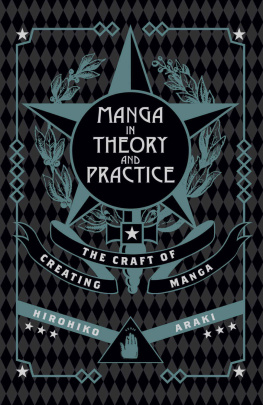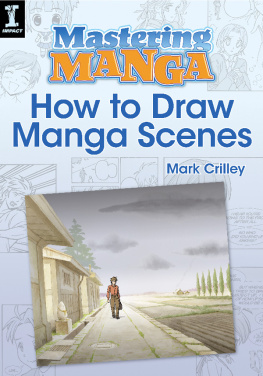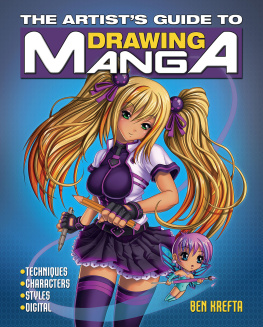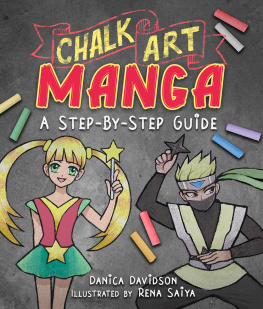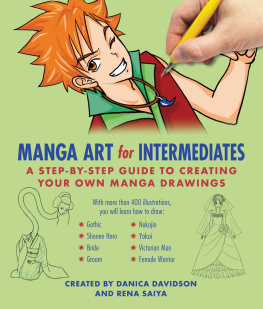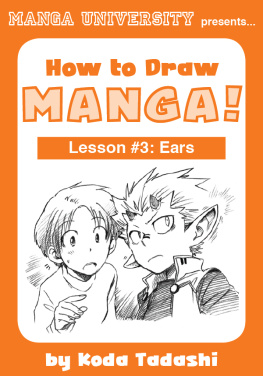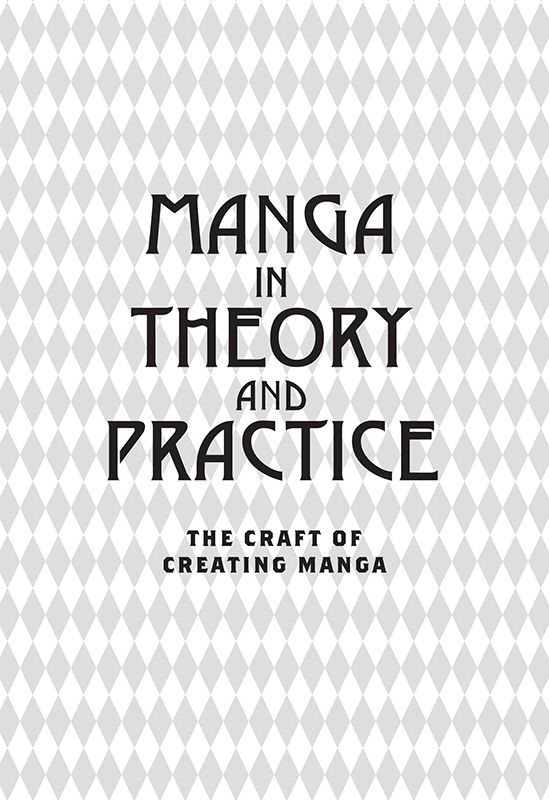Reprinted with the permission of Scribner, a division of Simon & Schuster, Inc. from THE SNOWS OF KILIMANJARO: AND OTHER STORIES by Ernest Hemingway. Copyright 1927 Charles Scribner's Sons; Copyright renewed 1955. 1927 Ernest Hemingway; Copyright renewed 1955. 1933 Charles Scribner's Sons; Copyright renewed 1961 by Ernest Hemingway. 1936 Ernest Hemingway; Copyright renewed 1964 by Mary Hemingway. All rights reserved.
No portion of this book may be reproduced or transmitted in any form or by any means without written permission from the copyright holders.
Printed in the U.S.A.
Why I Am Writing This Book
My goal in writing this book is to guide you down the royal road to creating mangaor, to put it more simply: this is a how-to book.
Specifically, its a manga how-to book, which one might assume has an audience limited to the scant few people who want to write and draw manga. After reading these pages, perhaps only a small number will become professional manga creators mangaka or maybe only one, or none at all. If I were to make a manga instead of writing this book, that manga would certainly find a far larger readership. And yet this is a book I want to write, if only for that one person.
That said, the royal road to creating manga is relevant to more than just manga. In one way or another, I believe this knowledge has universal applications. Much of the process of creating stories and characters for manga applies to novels and film, just as methods of drawing do to painting, and idea development generally can be useful in many other professions. The perspective from which fictional settings are constructed could also overlap with studies into social structures or science.
Because manga as a medium has developed as an amalgamation of all these different fields, Im always keeping my antennae tuned to those worlds. From that point of view, the royal road to manga should be taught universally, rather than merely to those who wish to create manga. This is first and foremost a book for those who want to become mangaka, but I also hope it will provide new avenues of thought to all who read it.
The Golden Way
Through my more than three decades of making manga, Ive learned much by repeated trial and error. In this book, I will write about the knowledge Ive gained about how to create a manga that adheres to the royal road, but this is just one snapshot of the progress of manga as an art formwhat I call the golden waywhich has existed invariably since long ago.
If you want to create manga, I hope that you will learn the royal road to manga and that you will pursue the golden way with awareness. The royal road to manga will lead you to creating works that will be beloved and thus passed down across the generations. Those who would be satisfied with a single, temporary hiteven if they end up striking upon several successeswill not truly understand the royal road to manga. As a word of advance warning: that attitude wont keep a mangaka going for long. Manga is not so lenient.
Follow the Royal Road, but Carry a Map
Another way of looking at the golden way is as a map to be used when youve lost your way. If you were to go hiking on an unfam-iliar mountain, youd bring a map, right? If you also have with you a foundation of mountaineering skills, like basic survival knowledge and familiarity with mountainous terrain, you could wander onto side paths and discover unexpected scenery, and if you were to come across any dangers, you could find your way around them and still reach the summit.
But if you try to climb a mountain with no map and no fundamental knowledge, you will soon be wandering at random. Your chances of reaching the top will plummet, and you may leave the path never to find it again, or even end up stranded on the mountainside.
Think of the golden way of which I write in this book as signposts directing you to the royal road of manga at the summit. Attempts to reach those heights without any such map or anything else to guide the way will be frustrated far from the peak. This is something Ive seen and heard happen many times.
I dont want aspiring mangaka to have to experience such a fate. Of course, Im not saying that you have to create your manga in exactly the same ways I outline in this book, and some will probably read some of it thinking, No, this part is wrong. But you can only understand that something is wrong if you know the way. In that sense, I hope that this book can be a map for those who want to create manga.
Never Lose Sight
I myself had several maps that got me through the difficult times before and during my early career, when I was struggling to gain readers acceptance. One was a book of interviews by famed French New Wave director Franois Truffaut with the master of suspense, Alfred Hitchcock, titled Hitchcock/Truffaut . The book can be considered a textbook for filmmaking, but I also think its a must-read for aspiring mangaka.
The tome, nearly four hundred pages long, provides a detailed account of Hitchcocks meticulous filmmaking process. Hitchcock freely reveals specific techniques, including how to foreshadow and set up a plot, and how to develop a characters psychological portrait. The interviews provide one revelation after another, and the book has been of indispensable value to me; I still read through it every now and again.
I was able to persist under the continued harsh criticisms of my editors without my spirit breaking because I had a clear goalI knew what manga I wanted to createand, because I had my maps, like Hitchcock/Truffaut , I could see the path I needed to take to get there.
The worst thing for aspiring mangaka is not knowing what kind of manga they want to create. When editors say that such-and-such part doesnt work, or the manga needs to be more like this or that, some new to the field ask their editors, Well, what should I be making? But thats the one question that absolutely should not be asked. Not knowing what one should create is like walking on a glassy smooth surface though total darkness. In a situation like that, not even a map would be of any use. So please, never lose sight of your purposeof what you want to achieve by creating manga.

